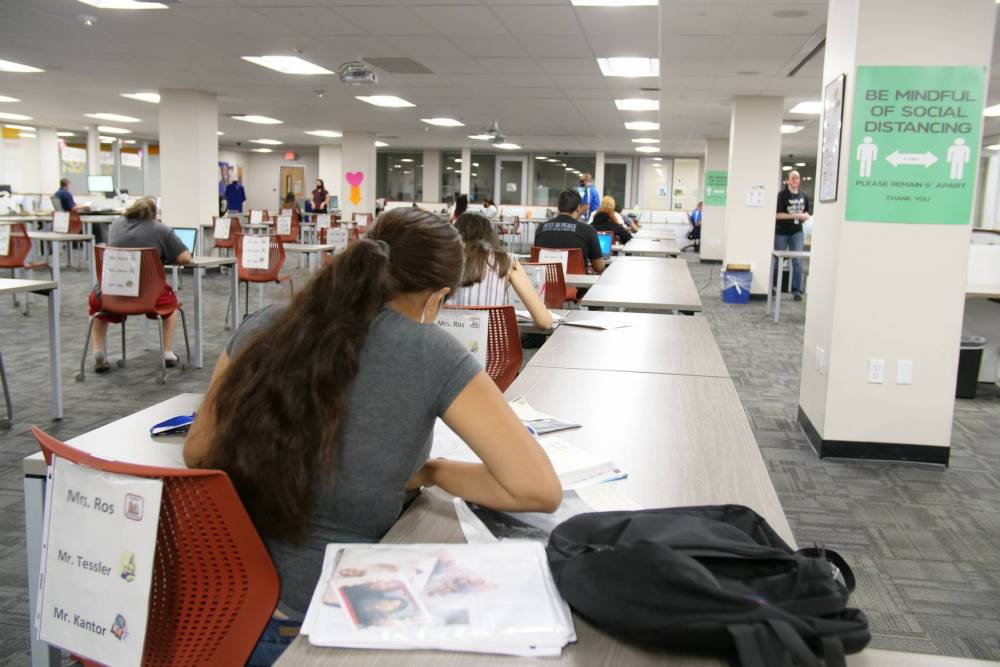
The following article is an opinion piece and reflects the views of only the author and not those of AllOnGeorgia.
By: Dr. Caprice Young, national superintendent serving the students of Learn4Life, a network of nonprofit, public charter high schools that recovers dropouts and serves at-risk students through a personalized learning model.
Educators and parents of all backgrounds are worried about learning loss from the pandemic-driven education upheaval, and school leaders are trying to figure out how teachers can effectively manage 120+ students a day in remote learning.
In a recent Teaching from Home survey by Upbeat, 7,195 teachers estimated that only 60 percent of their students are engaged in remote learning on a regular basis, with wide gaps in perceived engagement along racial and socio-economic lines. Teachers working in high-poverty schools and those that serve more students of color report that young people face dramatically more challenges engaging in school, including technology access and learning supports at home.
In addition to ensuring that all students have free unlimited internet access, educators need to shift their focus to provide personalized, high-intensity learning. That means replacing large group instruction (currently delivered by video) with giving each student at least four hours a week of individual, one-on-one or very small-group instruction. This key strategy change will dramatically increase the effectiveness of remote learning during the pandemic.
In traditional high schools, most students receive low-intensity instruction. They’re taking five or six courses with 25-40 students in each class. The teachers lecture to kids who are likely reading at a dozen different grade levels, who may have varying attention spans, special needs or English language challenges. For a student to get even 10 minutes per week of one-on-one attention is rare.
During the last century, the U.S. education system switched to the factory model, warehousing kids in crowded classrooms where everyone had to learn at the same pace. That model persists to this day, especially in large middle and high schools. Some kids are bored and not challenged, while others are lost and not able to keep up. During the pandemic, most schools have just replaced “seat-time” with old fashioned “screen-time” or “teacher on TV.” Five and a half hours a day of class screen-time does not equal a full day of effective instruction; but four hours per week of high-intensity instruction can lead to a full week of effective individualized student learning.
More affluent families know the importance of one-on-one, high-intensity instruction and already compensate with parental involvement and paid tutoring support. During the pandemic, many are forming learning pods (small groups) to ensure their children continue their academic progress. Unfortunately, too many families don’t have those options because the parents are not familiar with the subject matter or can’t afford to supplement with high-intensity instruction.
Middle and high schools can catch up by immediately moving to courses that were intended for the remote environment and training teachers to shift from delivering information to individual or small group tutoring appointment times. If schools must stick with old textbooks, then one-one-one and small group, high-intensity instruction is even more important. This will foster independence and analytical thinking, develop self-learners and encourage collaboration. Let’s inspire and motivate individuals and turn them into lifelong learners. Instead of lecturing to large classrooms, we need to encourage a student’s discovery and curiosity. By expanding a sense of ownership over their own learning, students will develop independence and focus.
With high-intensity instruction, teachers form strong relationships with fewer students. Their role is to facilitate student learning and time management, while helping them keep on top of their assignments, access subject matter specific virtual tutoring and intervention resources, and provide feedback on assignments. High-intensity instruction can feel more complex at first, but it is much more rewarding for both students and teachers both in terms of academic and social-emotional success. It is a structure that leverages both technology and teacher expertise in a flexible context.
Some students need more high-intensity instruction in one subject but can work more independently in another. Flexible high-intensity instruction helps use teachers’ time much more efficiently with each student. We have learned that the existence of “school” is not as important as the accessibility of school. We can have great programs online, but if students cannot access them, they don’t exist. School districts can prioritize intensity and accessibility to remedy the learning losses of the past few months and increase student achievement.


Bulloch Public Safety
12/12/2025 Booking Report for Bulloch County

Georgia Politics
Gov. Kemp to Sen. Padilla: Stop Playing Politics With American Hero

Bulloch Public Safety
12/11/2025 Booking Report for Bulloch County

Bulloch Public Safety
11/24/2025 Booking Report for Bulloch County

Bulloch Public Safety
12/01/2025 Booking Report for Bulloch County

Bulloch Public Safety
11/17/2025 Booking Report for Bulloch County

Bulloch Public Safety
11/26/2025 Booking Report for Bulloch County

Bulloch Public Safety
12/08/2025 Booking Report for Bulloch County






